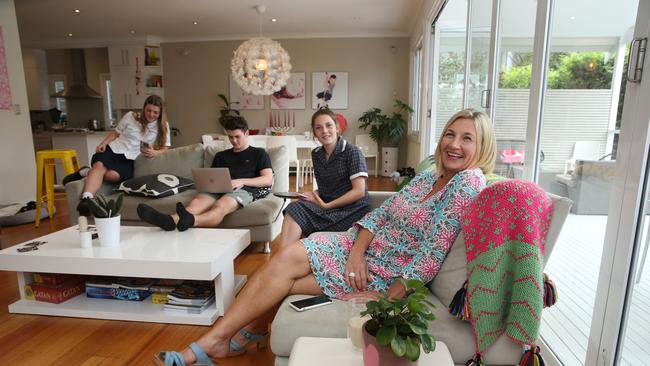Viewers make switch and turn the telly off
The number of people tuning into prime time free-to-air television is in freefall.

The number of people tuning into prime time free-to-air television is in freefall as the commercial networks struggle to retain fracturing audiences in the face of increasing competition from streaming services.
Nine’s Married At First Sight might have come out the winner against Seven’s My Kitchen Rules: The Rivals and Australian Survivor: All Stars on Ten last Monday (February 24), but there was little cause for celebration.
Just over 2.1 million people in OzTam’s five-city metro ratings tuned in — well down on the 2.645 million who tuned in to watch MKR, MAFS and Ten’s Dancing with the Stars at the same time on Monday, February 25 last year.
Reality TV isn’t the only format languishing.
Nine’s flagship current affairs show 60 minutes has been a disappointing performer, failing to come anywhere near the one million viewer mark it easily cleared just five years before — even though it now has a clear run in its timeslot after Seven axed its rival show Sunday Night because of low ratings.
Even Australian drama is beginning to falter. Home And Away routinely rated more than 800,000 viewers in its 7pm weeknight timeslot back in February 2015, but this last month it has been hovering between 500,000 and 600,000.
The decline has been driven in part by younger viewers who have grown up with on-demand viewing and are increasingly unlikely to watch free-to-air at all.
Victoria University’s Marc C- Scott said the time teenagers spent watching television had crashed.
“In 2011 teens were watching 54 hours of television a month, now they’re watching just 18 hours,” Dr C-Scott said.
“The key reason why is simply they have access to so much more content on their devices.”
Last year 11.9 million Australians, or 57 per cent of the population, had access to a Netflix subscription in their household and 2.6 million had access to Stan, research firm Roy Morgan says.
In addition, while the average Australian household had just 1.8 television sets on average, they were home to 6.6 devices that could be used for streaming.
Media analyst and managing director of Fusion Strategy Steve Allen said the networks needed to take more risks to arrest their dramatic decline in viewers.
“There needs to be more risk-taking. They don’t have a choice,” Mr Allen said.
“Some of the networks are going back to old staples like Big Brother — I would query the strategy and the need to go back to formats that used to be successful and then failed.” But even that may not work. Sydney mum Mel Castle said her three children never chose to watch TV.
“They’re always on a screen, always — but they don’t naturally turn the telly on,” she said.
“Kids are totally uninterested in TV these days. I don’t think it comes naturally to this generation to watch it. They spend a lot of time on their screens in the bedrooms.”
What is more, the shows her children enjoy watching are not even close to the types of programs traditionally broadcast by the free-to-air networks.
Arabella Castle said she spent most of her time watching videos on Instagram and YouTube.
“On YouTube I watch beauty videos, like makeup tutorials and things,” the 14-year-old said.
“The last TV show I watched every week was, like, maybe in year three or something.”
Even her soccer-mad brother, Ollie, 18, said he never bothered tuning in to sport on television.
“Every weekend I watch the English football highlights from the overnight games on YouTube,” he said. “And you have to pay a subscription to Optus sport.”




To join the conversation, please log in. Don't have an account? Register
Join the conversation, you are commenting as Logout